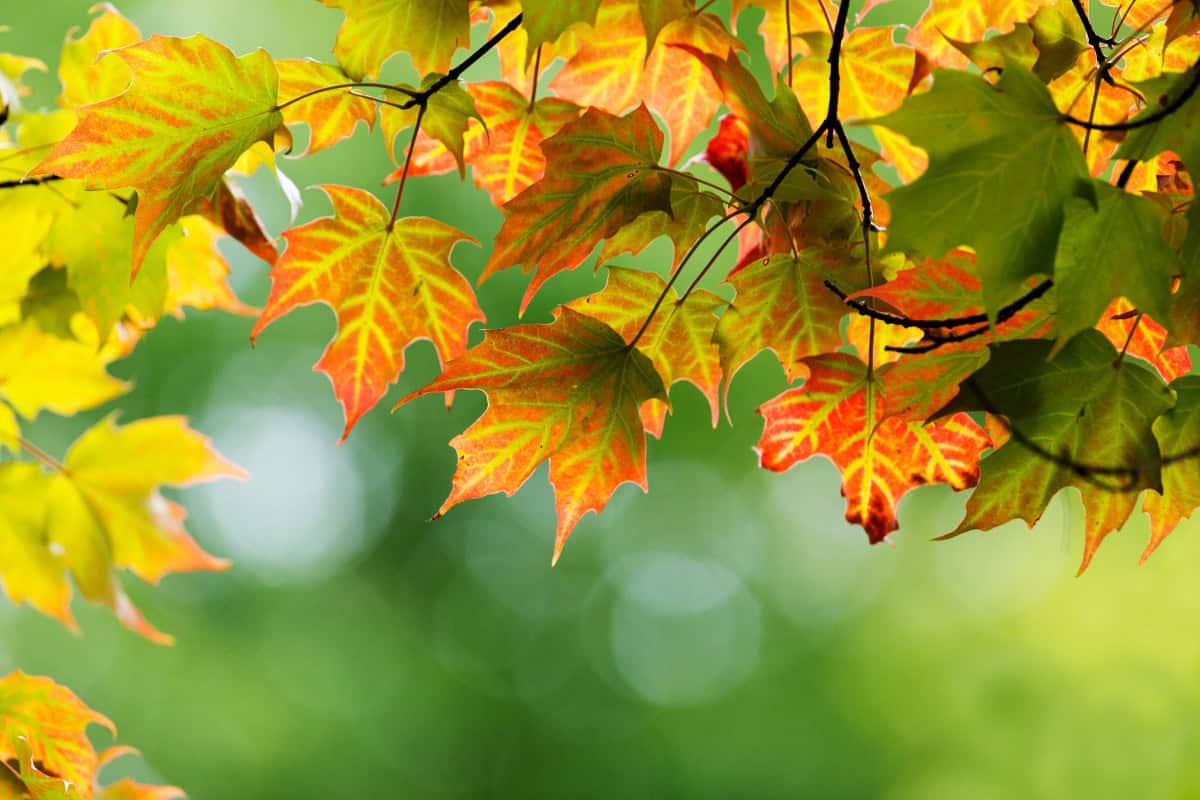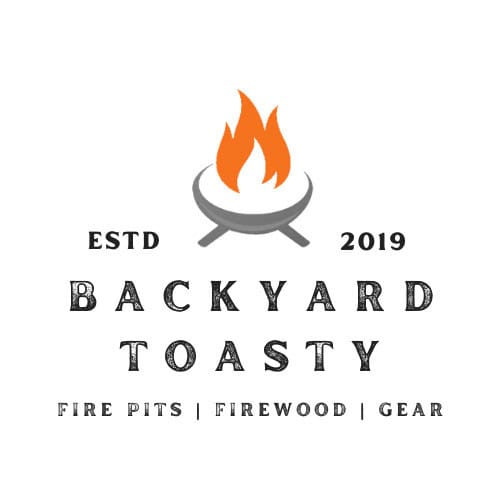
This comprehensive Sugar Maple firewood profile explores the premium “gold standard” of North American hardwoods, delivering an impressive 24,000-29,000 BTUs per cord with exceptional burning characteristics.
Whether you’re planning serious cold-weather heating or need the ultimate cooking wood with superior coaling properties, sugar maple consistently ranks among the very best choices for discerning fire pit owners and serious wood burners.
- Quick Reference Stats: Sugar Maple Firewood Profile
- Overview & Identification
- Geographic Distribution
- Burning Characteristics
- Sensory Experience
- Processing & Preparation
- Specialized Uses
- Pros & Cons
- Best Practices & Tips
- Bottom Line: Sugar Maple Firewood Profile
- 🍁 Sugar Maple Quick Reference Table 🔥
- Related Resources: Sugar Maple Firewood Profile
Quick Reference Stats: Sugar Maple Firewood Profile
- Wood Type: Hardwood (premium grade)
- BTU Rating: 24,000-29,000 BTUs per cord
- Ease of Splitting: Difficult when seasoned, moderate when green (2/5 scale)
- Seasoning Time: 12-24 months
- Smoke Production: Low to Moderate
- Spark/Pop Factor: Very Low
- Scent Profile: Exceptional – Sweet, distinctive maple aroma
Overview & Identification
Sugar Maple stands as the premier choice for fire pit enthusiasts who demand maximum performance and premium characteristics.
This slow-growing hardwood delivers exceptional heat output, outstanding coaling properties, and the distinctive sweet aroma that makes it prized for both heating and cooking applications.
This comprehensive sugar maple firewood profile demonstrates why many consider it the “gold standard” against which all other firewoods are measured.
Common Names: Sugar Maple, Hard Maple, Rock Maple, Sweet Maple, Birds-eye Maple, Curly Maple (referring to wood grain patterns)
Scientific Name: Acer saccharum
Tree Characteristics: Large, slow-growing deciduous tree reaching 80-115 feet tall with distinctive five-lobed leaves lacking teeth along margins. Mature bark develops characteristic long plates that remain attached on one side, creating distinctive vertical ridges.
Geographic Distribution
Where You’ll Find It: Native to hardwood forests of eastern Canada and eastern United States. Primary range extends from southeastern Canada through New England, the Great Lakes region, and south through the Appalachian Mountains.
Availability: Good availability in northeastern regions, though premium pricing reflects its superior quality and slower growth
Growing Conditions: Thrives in well-drained, moist soils in temperate climates. Requires cold winters for optimal growth and cannot tolerate excessively wet or dry conditions. Highly shade-tolerant species.
Burning Characteristics
Heat Output & Performance
- BTU Content: Outstanding performance delivering among the highest heat output of any North American hardwood
- Burn Duration: Burns slowly and steadily with exceptional heat retention throughout the burn cycle
- Coaling Properties: Forms excellent, long-lasting coals that maintain heat for extended periods
- Flame Characteristics: Burns hotter and brighter than oak or hickory with steady, reliable flames
Ignition & Fire Management
- Ease of Lighting: Can be challenging to ignite initially – requires well-established fire or good kindling
- Best Fire Stage: Excellent primary fuel for serious heating and outstanding for overnight burns
- Burn Rate: Slow, steady consumption provides maximum burn time and heat output per log
- Heat Consistency: Exceptionally reliable and steady heat output with minimal temperature fluctuation
Sensory Experience
Smoke Profile
- Smoke Volume: Low to moderate smoke production when properly seasoned
- Smoke Color: Light, clean smoke that disperses well
- Smoke Flavor: Sweet, distinctive maple flavor highly prized for cooking applications
- Creosote Production: Low when adequately seasoned due to clean burning characteristics
Sound & Visual
- Crackling/Popping: Quiet burning with minimal crackling – very dignified burn characteristics
- Sparking Tendency: Very low spark production – excellent safety profile for all applications
- Flame Appearance: Impressive, steady flames with beautiful orange-yellow color
Aroma
- Burning Scent: Exceptional sweet maple fragrance often likened to maple syrup
- Pleasant Factor: Highly prized – creates cozy, inviting atmosphere reminiscent of syrup production
- Intensity: Strong, distinctive aroma that’s immediately recognizable and widely loved
Processing & Preparation
Splitting Characteristics
- Ease of Splitting: Difficult when seasoned – “hard as rock” reputation is well-earned
- Grain Pattern: Fine, tight grain that can be very challenging to split by hand when dry
- Tools Needed: Hydraulic splitter strongly recommended for seasoned wood; splitting axe works for green wood
- Best Splitting Conditions: Absolutely essential to split when green – becomes extremely difficult when dry
Seasoning Requirements
- Drying Time: 12-24 months minimum for proper seasoning – treat like oak or hickory
- Moisture Content: Target 15-20% moisture content for optimal burning performance
- Seasoning Tips: Dense wood requires excellent air circulation and extended drying time
- Storage Considerations: Excellent storage characteristics – worth the investment in proper seasoning
Processing Notes
- Chainsaw Considerations: Dense wood that can dull chains – maintain sharp equipment
- Bark Characteristics: Distinctive plated bark makes mature trees easy to identify
- Handling: Very heavy wood – significantly denser than most species, plan accordingly
Specialized Uses
Cooking Applications
- Cooking Suitability: Outstanding for all cooking applications – premium choice for smoking and grilling
- Flavor Profile: Imparts distinctive sweet maple flavor highly prized for pork, poultry, and fish
- Cooking Stage: Excellent for low-and-slow cooking, maintaining steady temperatures for hours
- Food Safety: Clean burning makes it safe and ideal for all cooking applications
Premium Heating
- Cold Weather Performance: Outstanding choice for serious cold-weather heating
- Overnight Burns: Exceptional coaling properties make it ideal for overnight heating
- Efficiency: High BTU output means fewer logs needed for equivalent heat
Pros & Cons
Advantages
- Exceptional BTU output – among the highest of any North American hardwood
- Outstanding coaling properties for extended heat and overnight burns
- Burns cleanly with minimal smoke when properly seasoned
- Distinctive, highly-prized sweet maple aroma
- Excellent safety profile with very low sparking
- Premium cooking wood with superior flavor characteristics
- Long burn times reduce loading frequency
- Excellent storage characteristics
Disadvantages
- Extremely difficult to split when seasoned – requires planning and proper equipment
- Extended seasoning time of 12-24 months
- Premium pricing reflects superior quality and slow growth
- Can be challenging to ignite without established fire
- Very heavy wood makes handling more demanding
- Limited availability outside northeastern regions
- Dense wood can dull chainsaw chains quickly
Best Practices & Tips
Fire Pit Optimization
- Ideal Fire Size: Perfect for any size fire where maximum heat and duration are priorities
- Mixing Recommendations: Outstanding primary fuel – combine with easier-lighting woods for best results
- Safety Considerations: Excellent safety characteristics make it ideal for all applications
- Weather Suitability: Outstanding performance in cold weather – maintains heat in challenging conditions
Purchasing & Storage
- What to Look For: Dense, heavy pieces with tight grain and distinctive sweet scent when fresh-cut
- Pricing Expectations: Premium pricing – typically 25-50% above standard hardwoods
- Storage Lifespan: Excellent long-term storage characteristics when properly seasoned
Bottom Line: Sugar Maple Firewood Profile
Sugar Maple represents the ultimate choice for serious fire pit users who demand maximum performance and are willing to invest in premium firewood.
It represents the ultimate choice for serious fire pit users who demand maximum performance and are willing to invest in premium firewood.
While it requires significant processing effort and extended seasoning time, the exceptional heat output, outstanding coaling properties, and distinctive characteristics make it the gold standard for both heating and cooking applications.
This sugar maple firewood profile confirms why it’s become the benchmark that all other premium firewoods are measured by.
Best For: Serious cold-weather heating, overnight burns, premium cooking applications, and those who appreciate the finest firewood characteristics available
Skip If: You need easily processed wood, quick seasoning times, budget-friendly options, or lack proper splitting equipment
🍁 Sugar Maple Quick Reference Table 🔥
Sugar Maple is the gold standard of North American firewood. With extremely high density, premium BTU output, and a sweet aroma, it offers industry-best coaling, top-tier burn time, and fabulous culinary results. Ideal for serious heating or gourmet cooking, Sugar Maple is the choice for those demanding excellence and endurance.
| Characteristic | Rating/Value | Notes |
|---|---|---|
| 🔥 BTU per Cord | 24,000-29,000 | Among highest available |
| ⚖️ Density | Very High | Extremely heavy, dense wood |
| ⏰ Seasoning Time | 12-24 months | Premium wood requires patience |
| 🪓 Splitting Difficulty | Difficult (2/5)⭐ | Split green or use hydraulic splitter |
| 💨 Smoke Production | Low-Moderate | Clean burning when seasoned |
| ✨ Spark/Pop Factor | Very Low | Excellent safety characteristics |
| 🚀 Ignition Ease | Challenging | Needs established fire |
| ⚡ Burn Rate | Very Slow | Maximum burn time per log |
| 🔥 Coaling Ability | Excellent | Outstanding long-lasting coals |
| 🌸 Scent Quality | Exceptional | Distinctive sweet maple aroma |
| 🍳 Cooking Suitability | Outstanding | Premium choice for smoking/grilling |
| 💰 Cost Level | Premium | Reflects superior quality |
| 🎯 Best Use | Cold weather heating, cooking | The gold standard |
| 🏆 Overall Rating | Premium performance excellence |
Related Resources: Sugar Maple Firewood Profile
Last updated: 8/14/2025


